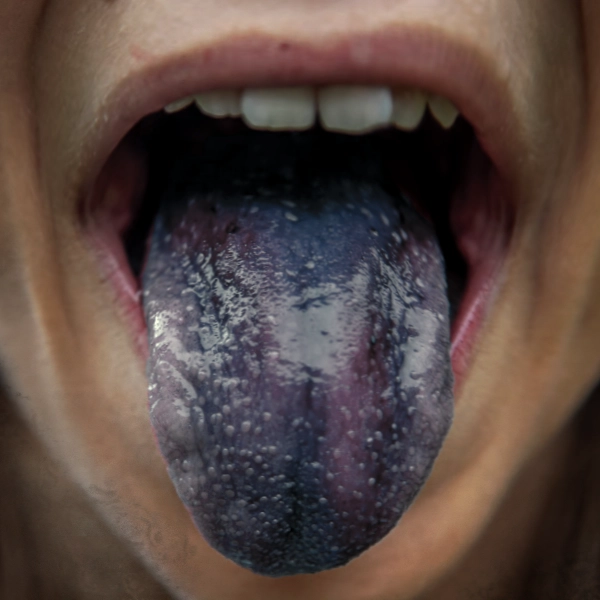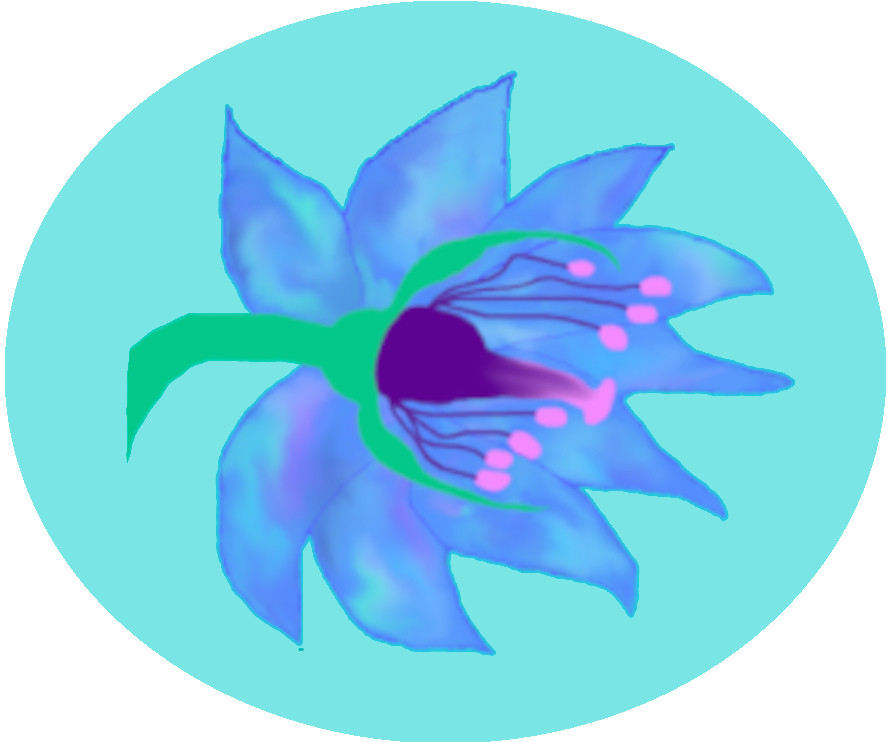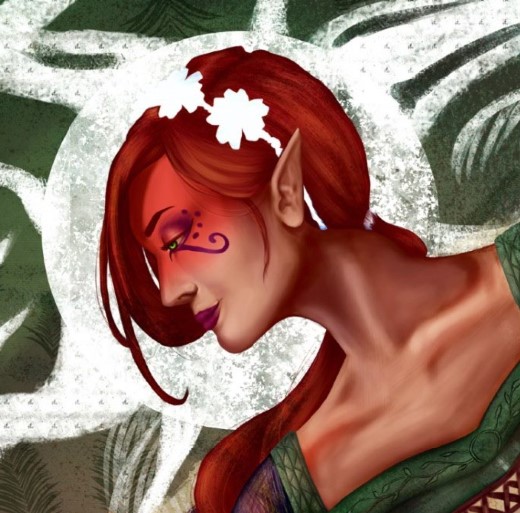Blue-Tongue Madness
A harmful condition caused by the phototoxic plant, mintonleaf, that leaves people blue-tongued and craving more.
If you see mint with leaves bigger than three fingers wide, don't ever eat from it - it could be the worst mistake of your life.
Overview
Blue-tongue madness (sometimes abbreviated as BTM or simply known as blue-tongue) is a harmful condition caused by the consumption of the aromatic yet highly phototoxic mintonleaf plant. The affliction develops from a chemically induced irritation in the mouth that requires light to manifest symptoms. The tongue's response resembles an exaggerated sunburn; it causes uncomfortable tingling sensations as it blisters followed by involuntary reactions to sneeze or inhale air to cool the mouth. If exposed to light, the phototoxins present in the affected area will intensify the reaction, causing moderate pain and an intense blue or purle pigmentation that will begin to develop on the tongue. Over the course of a few hours the discomfort can become so extreme that a destructive addiction cycle emerges: the desire to cool the mouth down becomes so overwhelming that people will eat more of the mintonleaf plant to experience the fragrant burst of cooling sensation when the leaves are first chewed. Whilst this relieves the uncomfortable tingling sensations for a while, the pain resumes a few hours later. When the cycle of consuming mintonleaf is broken, the symptoms take up to two weeks to heal on their own, but the pigmentation of the tongue and addiction to mintonleaf permanently remains.A Light Reaction
The first symptom can be hard to notice if tasting the flavour for the first time, which unfortunately makes this condition more likely to be experienced as a child than in adulthood. A light and pleasant tingling occurs on the tongue that gradually builds in intensity until it becomes so strong that the natural reaction is to open the mouth to suck in (or exhale) air, as if consuming hot or spicy food. When the tongue is even slightly exposed to daylight, the phototoxic reaction of mintonleaf slowly begins.If ever you accidentally eat mintonleaf, cover your mouth immediately and go indoors. Get as far away from the plant as possible and don't open your mouth uncovered unless it's night time.
Symptoms
- Tingling sensation in the tongue.
- Sneezing or anticipating sensations of sneezing.
- Blue tongue that does not revert to its normal colour.
- Craving to consume mint or mintonleaf for its cooling effects.
- Extreme tingling sensation in the tongue with further consumption of mintonleaf.
- Craving of mint-like cooling sensations.
- Addiction to experiencing the taste and tingling sensation from mintonleaf.
Development
- The tongue starts tingling and blisters begin to develop that make it uncomfortable to keep the mouth closed.
- Further exposure of the affected area to daylight worsens the reaction and the tongue develops a noticeable blue colour.
- Tingling sensations spread from the back of the tongue up to the nasal cavity, which causes sneezing.
- The symptoms can feel uncomfortably hot and painful, lingering without much change for four to five days.
- Cravings emerge in the form of wanting to experience the further cooling effect of mint flavour by consuming more leaves.
Recovery
The painful symptoms of blue-tongue begin to noticeably heal after five to six days and are often completely healed within two weeks. The bluish-purple colour of the tongue is permanent and there is no known cure to revert the colouration. Folks who have consumed mintonleaf are advised to take precautions and find support for managing the cravings of addiction; the desire to consume something that has once caused pain or trauma can lead to confusing feelings and poor mental health if left unmanaged.Managing Addiction
There are many different techniques available for managing addiction and the majority of folks are not impacted by it at all and have even reduced their cravings and desires of mintonleaf to nothing. Methods that can help people include:- consumption of normal safe-to-eat mint
- slow and moderated reduction in consumption of mint or mintonleaf
- community based group therapy and accountability support groups
Dangerous Delights
A small number of folk view their addiction as more akin to thrillseeking and have turned it into a form of "culinary challenge" or rite of passage to see who can handle the most mintonleaf. Self proclaimed 'blue-tongues' are groups (or sometimes gangs) of individuals who take great pride in their ability to endure such pain. Scarred, dark blue tongues are admired and respected among these groups, but are often deeply disdained by the rest of society as foolish masochists. This reuptation has unfortunately caused many recovering folks to feel deep shame about their blue tongue.Prevention
Mintonleaf is not native to Melior and arrived from another realm through numerous rifts scattered across the world. The earliest reportings of any incident came from Devonia, on the central aurward coast of Anvil, where it has now spread both across the continent and potentially overseas. With curious young minds often being those who are most affected by the long term effects of the condition, parents and communities have made mintonleaf identification and elimination a high priority.For the safety of our children it is of the utmost importance that invasions of mintonleaf are kept in check and iradicated from Melior. We must not let its roots take hold in our land! The best cure for this awful blue-tongue is to prevent it from ever happening in the first place.
Blue-tongue
Minton-mouth
















Kids would absolutely end up with this a lot. My kids love putting all sorts of random things in their mouths. I'm glad the addiction can be treated long term. That must be so difficult especially for the kids - and their parents.
Necromancy is a Wholesome Science.
Thank you! Your comment has inspired me to add an extra section that I can expand on for the prevention of further incidents.